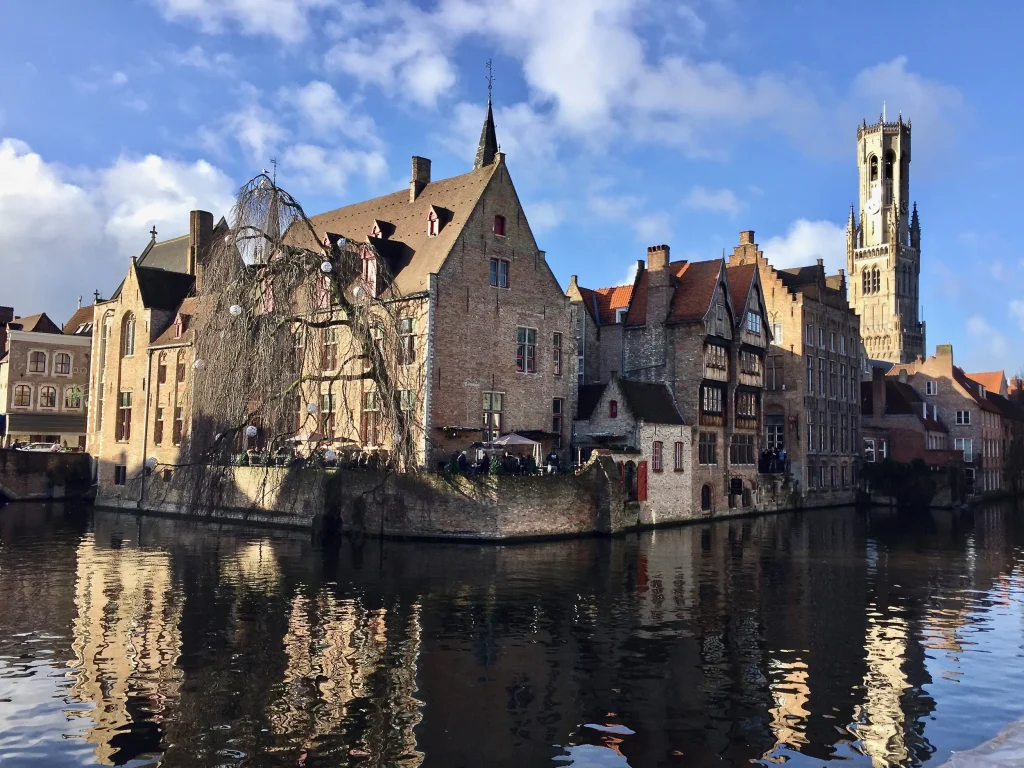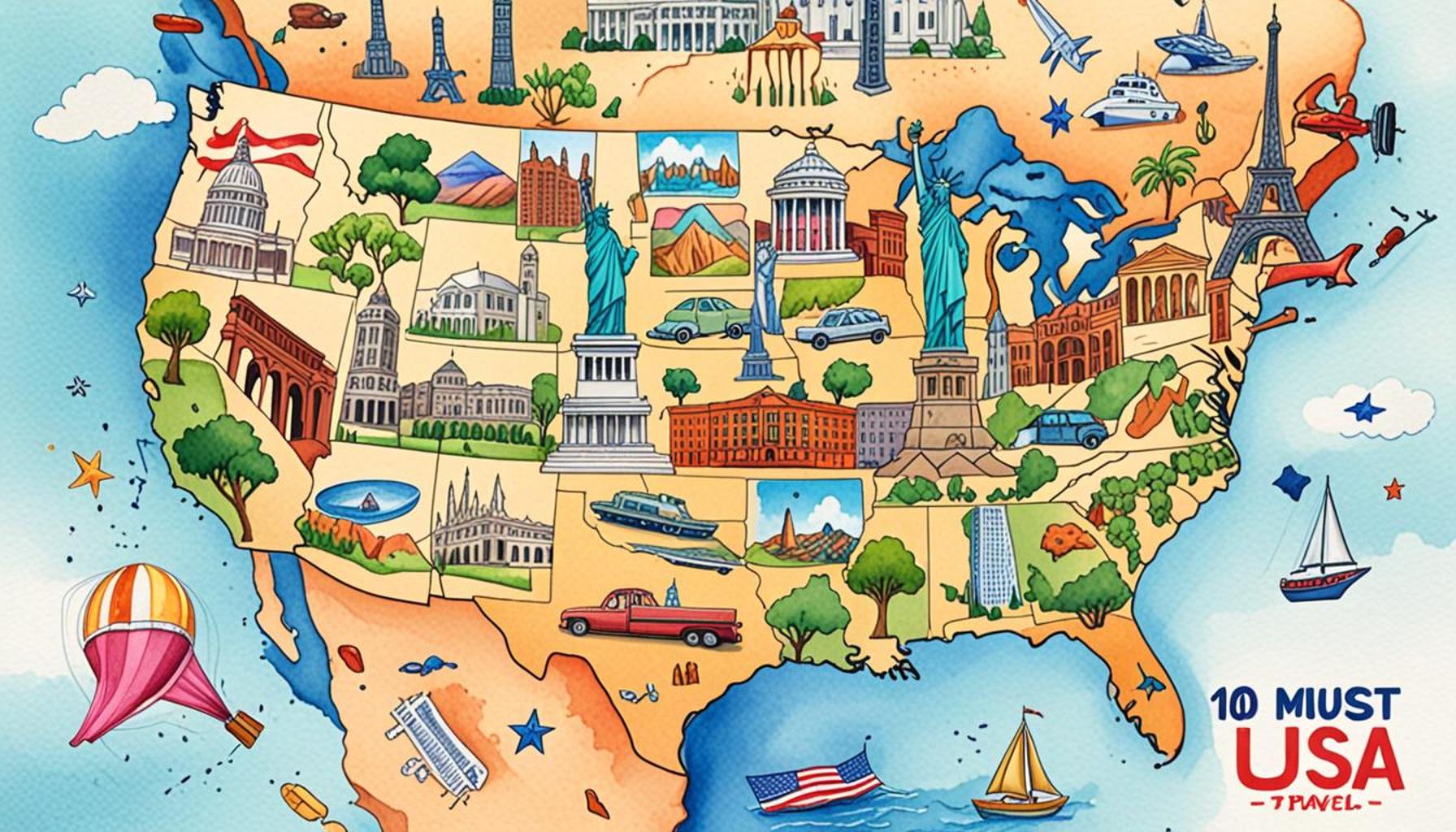Cheap Travel Itineraries: Exploring Historical Cities Without Breaking the Bank

Exploring the Allure of America’s Historical Cities
Traveling doesn’t always require a hefty budget, especially when it comes to exploring historical cities. Many of these destinations are rich in culture and history, offering countless experiences without a high price tag. With meticulous planning and a little creativity, you can embark on exciting adventures that immerse you in stories of the past without breaking the bank.
Budget-Friendly Attractions: Many historical landmarks offer free or discounted entry days. For instance, visiting the historic sites in Boston such as the Freedom Trail not only gives you insight into America’s revolutionary past but also allows you to explore these sites at little to no cost. The National Park Service even provides free guided tours throughout the year, making this a perfect opportunity for budget-conscious travelers.
Affordable Accommodations: Options for lodging can significantly lower your overall travel costs. In cities like Philadelphia, you can find comfortable hostels or budget hotels near the historic district. Alternatively, vacation rentals can offer unique stays in charming neighborhoods, often at prices comparable to traditional hotels but with the added benefit of a kitchen where you can prepare your meals, saving even more money.
Public Transportation: Efficient transit systems make navigating these cities inexpensive and easy. Many historical cities boast extensive public transport that makes it simple to hop from one site to another. For instance, New Orleans features a famous streetcar system that connects historically rich areas like the French Quarter and Garden District, allowing you to soak in the unique architecture while keeping your travel costs low.
From the cobbled streets of Boston to the ancient ruins of Philadelphia, America is dotted with cities that whisper tales of the past. Each offers a unique glimpse into history, allowing travelers to dive into culture, architecture, and local traditions without spending a fortune. Here are a few cities worth noting:

- Savannah, Georgia: Famous for its historic squares and Southern charm. The city’s beautifully preserved architecture and lush landscapes create a picturesque backdrop. Consider a walking tour, which is often affordable and allows you to interact with knowledgeable locals.
- St. Augustine, Florida: The oldest city in the U.S. is known for its distinct Spanish colonial architecture. Visitors can stroll through historic streets and visit free sites like the Castillo de San Marcos National Monument, where you can admire the fort’s historic significance without any entry fee.
- New Orleans, Louisiana: A blend of French, Spanish, and Creole influences, this city is steeped in vibrant history. From the architecture of the French Quarter to the haunting stories of the Garden District, there are plenty of free walking tours available that can lead you through the rich narratives of this enchanting city.
By planning wisely, you can enjoy the allure of these destinations and create unforgettable memories. Whether you are exploring the intricate history of Savannah or indulging in the cultural tapestry of New Orleans, there’s so much to uncover without a hefty price tag. Prepare to unearth captivating stories and experience the vibrant heritage of America’s finest historical cities—all while staying within your budget. With each step, you’ll find that the past enriches the present and fuels a deeper sense of connection to the places we explore.
Maximizing Your Experience with Low-Cost Strategies
When it comes to budgeting for a trip to historical cities, it’s not just about saving on accommodations and transportation; it’s essential to consider how you can maximize every dollar spent on experiences and activities. The key to an unforgettable journey lies in discovering low-cost or free events that reveal the soul of each destination.
Many historical cities host free festivals, parades, and local markets throughout the year. For example, in Savannah, you can participate in the annual Savannah Music Festival, which features a variety of musical genres throughout the city for little to no cost. Keep an eye on city calendars or local tourism websites to find out when these events are taking place; you might be able to delve into the local culture while enjoying free entertainment.
Self-Guided Tours: In addition to free guided tours, consider creating your own self-guided walking tour. Historical cities are often easy to navigate and boast a wealth of information available online. Download a free audio guide or do some research online to map out your excursion. This way, you can explore at your own pace and linger at sites that intrigue you the most without feeling rushed. Cities like St. Augustine boast numerous historical markers that tell the compelling stories of their past right on the streets.
Here are a few strategies to consider while planning your trip:
- Leverage City Passes: Many cities offer passes that bundle admission to popular attractions at a discounted rate. These often include entry to museums, historic sites, and public transport. In Philadelphia, for example, the Philly Pass provides significant savings for those looking to explore attractions like the Philadelphia Museum of Art and the Liberty Bell.
- Plan Off-Peak Visits: Traveling during the shoulder season (spring and fall) usually means lower prices on flights and accommodations while also avoiding large crowds. This is particularly relevant for cities like New Orleans, where summer swelters with heat and humidity, and fall presents a more pleasant atmosphere for exploration.
- Look for Student or Age Discounts: Many historical landmarks and museums offer reduced rates for students, seniors, or military personnel. Always ask about discounts; you might be surprised at how much you can save.
Dine Like a Local: Food is a critical part of experiencing a city’s culture, yet dining out can quickly chip away at your budget. To save money, look for local diners, food markets, or food trucks that offer authentic cuisine at reasonable prices. In New Orleans, be sure to try a Po’ Boy sandwich or the famous beignets from Café du Monde without spending a fortune. Eating like a local not only saves you money but also provides a deeper insight into regional culinary traditions.
By employing these budget-conscious strategies, your desire to uncover America’s historical cities can turn from a dream into a reality. Whether you’re tracking down the significance of key landmarks or savoring local delicacies, every penny saved enhances your travel experience. Embrace the past without the financial burden, and prepare to enrich your wanderlust as you navigate through the chapters of American history.
| Advantages | Key Features |
|---|---|
| Budget-Friendly Accommodations | Consider staying in hostels or local guesthouses that offer a unique cultural experience without high costs. |
| Access to Historical Landmarks | Many cities have free or affordable entry to museums and historical sites, allowing you to explore rich histories. |
| Local Cuisine on a Budget | Street food and local markets offer delicious meals at a fraction of restaurant prices, enhancing the travel experience. |
| Public Transportation Savings | Utilizing public transport not only saves money but also provides opportunities to experience daily life in the city. |
Exploring historical cities on a budget opens up a wealth of opportunities without financial strain. Travelers can find that immersing themselves in the culture and history of these places is no longer an exclusive luxury. Instead, they can enjoy unique experiences while saving money through smart planning and research. Engaging in local customs, from traditional markets to community events, enriches the journey and connects travelers with the living history surrounding them. For those curious about how to navigate through vibrant ‘historical city itineraries’, there are numerous resources available focusing on budget travel, which can guide you towards making the most of your adventure without exceeding your financial limits. By following affordable travel tips, one can truly experience historical treasures while maintaining financial sensibility.
Unique Accommodations that Save You Money
Finding affordable yet charming places to stay is crucial when exploring historical cities. While hotels can often come with a hefty price tag, numerous alternatives provide not only savings but a deeper local experience. Vacation rentals, hostels, and bed-and-breakfasts are great options to explore, offering cozy spaces steeped in character.
Consider checking out sites like Airbnb or VRBO, where you can find unique homes and apartments that can often be rented for less than the average hotel rate. In cities like Charleston, staying in a historic home or converted warehouse will give you a taste of the local flair without draining your wallet. Additionally, hostels—once only the realm of backpackers—now cater to a variety of travelers looking for a budget-friendly stay while still offering private rooms and family accommodations.
Bed-and-breakfasts can also offer a twin benefit: a comfortable stay combined with delicious homemade breakfast options. Many of these establishments are located in historic neighborhoods, providing you with a genuine feel for the city’s heritage right at your doorstep. If you choose to stay in a B&B in places like Williamsburg, Virginia, you might even find yourself in a residence that dates back to the 18th century, enriching your experience further.
- Look for Local Discounts: Some unique lodging options offer discounts for booking through local tourism websites or for longer stays. Researching can sometimes lead you to hidden gems that offer a fantastic location and price.
- Consider Alternative Areas: Staying slightly outside the main tourist hubs can drastically reduce your accommodation costs. Suburbs often feature easier access to public transportation, allowing you to explore historical sites easily while avoiding the high prices of downtown properties.
Transportation Options on a Budget
Getting around historical cities can also be economical if you plan wisely. Instead of relying on expensive taxis or rideshare services, familiarize yourself with the local public transportation systems. Many historical cities, like Boston and Washington, D.C., have excellent subway and bus networks that grant access to significant landmarks at a fraction of the cost of other modes of transport.
Moreover, consider investing in a multi-day transit pass if you plan to explore extensively. Cities like San Francisco offer a Clipper Card that can be used on buses, trams, and ferries, providing significant savings over single-ride tickets. Cyclists will also find it enjoyable to rent bikes for the day, discovering the sights at their own pace while avoiding parking hassles and fees.
Take Advantage of Museum Days and Historic Tours
Another way to stretch your budget is through visiting local museums on designated free or discounted days. Many renowned institutions have specific times when they allow free entry. For instance, in New York City, the Metropolitan Museum of Art suggests a pay-what-you-wish entry fee, making art accessible for all. Similarly, free walking tours exist in numerous cities, providing valuable insights into the history and culture for little to no cost. Look for companies that operate on a tips-only basis; your guide’s expertise is worth every penny you give.
By taking these practical steps, you can forge an unforgettable journey through historical cities without a financial strain. From charming accommodations to budget-friendly transportation and enriching experiences, the opportunities are vast for travelers looking to explore the layers of history woven into some of America’s most historic locales. Adventuring through these significant sites need not come with a hefty price tag, allowing you to savor every moment without the stress of financial burdens.
DISCOVER MORE: Click here for tips on planning your next national park adventure
Final Thoughts on Affordable Historical Travel
Exploring the rich tapestry of historical cities doesn’t have to be an expensive endeavor. By employing clever planning techniques and strategic choices, you can curate an exciting itinerary that respects both your budget and your thirst for adventure. Consider selecting affordable accommodations, such as hostels, boutique inns, or even vacation rentals that often come with kitchen facilities for preparing your meals. Sites like Airbnb or Hostelworld offer options that allow you to explore popular areas without breaking the bank. For instance, opting for a stay in a historic building can enhance your travel experience while staying cost-effective.
Utilizing public transportation is another stellar way to maintain a budget during your travels. Many historical cities, such as New Orleans and Philadelphia, have well-developed public transit systems that make getting around affordable. Additionally, investing in a travel pass can save you money on unlimited rides, allowing you to explore various neighborhoods rich in history at your own pace. Not only will this help you save cash, but it will also provide you with a more authentic feel of the local culture as you navigate alongside residents.
Furthermore, embracing local experiences is vital for any traveler looking to dive deeper into the culture. Engage with community-led tours, which often provide a unique perspective on historical landmarks. For example, walking tours led by local historians in cities like Boston or Chicago can be significantly cheaper than commercial tours, and they often unveil hidden gems and lesser-known stories. Additionally, many museums offer free admission days or sliding-scale fees, making it easier to immerse yourself in art and history without spending much. These poignant interactions allow you to appreciate the local heritage more deeply, making your expedition not just budget-friendly but also richly fulfilling.
In conclusion, the world of cheap travel itineraries is overflowing with possibilities for the intrepid traveler eager to explore historical cities. By prioritizing smart travel strategies—such as leveraging discounts, seeking out local events, or visiting during the off-season—you significantly enhance your chances of experiencing extraordinary adventures without the hefty price tag. So, as you pack your bags and grab your map, remember that each step through these storied streets can lead to unforgettable discoveries, all while staying comfortably within your means.



